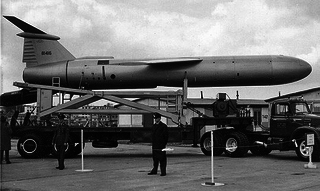
Jugendstil was an artistic movement, particularly in the decorative arts, that was influential primarily in Germany and elsewhere in Europe to a lesser extent from about 1895 until about 1910. It was the German counterpart of Art Nouveau. The members of the movement were reacting against the historicism and neo-classicism of the official art and architecture academies. It took its name from the art journal Jugend, founded by the German artist Georg Hirth. It was especially active in the graphic arts and interior decoration.
The Newton Lacy Pierce Prize in Astronomy is awarded annually by the American Astronomical Society to a young astronomer for outstanding achievement in observational astronomical research. The prize is named after Newton Lacy Pierce, an American astronomer.

In astronomy a superbubble or supershell is a cavity which is hundreds of light years across and is populated with hot (106 K) gas atoms, less dense than the surrounding interstellar medium, blown against that medium and carved out by multiple supernovae and stellar winds. The winds, passage and gravity of newly born stars strip superbubbles of any other dust or gas. The Solar System lies near the center of an old superbubble, known as the Local Bubble, whose boundaries can be traced by a sudden rise in dust extinction of exterior stars at distances greater than a few hundred light years.

Emil Sembach was an SS-Oberführer attached to the SS headquarters of Silesia. He had joined the Nazi Party in 1925, and received promotion in the SS in 1931.

The Martin Mace was a ground-launched cruise missile developed from the earlier Martin TM-61 Matador. It used a new self-contained navigation system that eliminated the need to get updates from ground-based radio stations, and thereby allowed it to fly further beyond the front lines. To take advantage of this longer practical range, Mace was larger than Matador and could travel a longer total distance.

Bundesautobahn 63 is an autobahn in southwestern Germany. It connects the Mainz area to Kaiserslautern and the A 6 and is therefore an important connection between the Rhine/Main and the Saar areas. It was constructed during the 1980/90s and finished in 2004: last section Sembach to Kaiserslautern.

Sembach is a municipality in the district of Kaiserslautern in the state of Rhineland-Palatinate, Germany. It forms part of the Verbandsgemeinde of Enkenbach-Alsenborn. The town is nestled in the Palatinate Forest Nature Park between Kaiserslautern and Donnersbergkreis. Sembach was first mentioned in the 13th century, in a document about a donation to the monastery of Enkenbach.

The Seventeenth Expeditionary Air Force was a numbered air force of the United States Air Force located at Ramstein Air Base, Germany. The command served the United States Air Forces in Europe during (1953–1996) and United States Air Forces Africa during 2008–2012. Upon reactivation on 1 October 2008, it became the air and space component of United States Africa Command. In this capacity, Seventeenth Air Force was referred to as U.S. Air Forces Africa (AFAFRICA). 17 AF was reformed in April 2012 to become the 17th Expeditionary Air Force, sharing a commander and headquarters with the Third Air Force. As of March 2022, the Third Air Force is USAFE-AFAFRICA's sole numbered air force, with the 17 EAF having been inactivated in July 2018.

Smith's Cloud is a high-velocity cloud of hydrogen gas located in the constellation Aquila at Galactic coordinates l = 39°, b = −13°. The cloud was discovered in 1963 by Gail Bieger, née Smith, who was an astronomy student at Leiden University in the Netherlands.

The 823rd Tactical Missile Squadron is an inactive United States Air Force unit. Its last assignment was with the 38th Tactical Missile Wing at Sembach Air Base, Germany, where it was inactivated on 25 September 1966, as the A model of the MGM-13 Mace was phased out of operation.

Circus Krone, based in Munich, is one of the largest circuses in Europe and one of the few in Western Europe to also occupy a building.

Sembach Kaserne is a United States Army post in Donnersbergkreis, Germany, near Kaiserslautern. It is approximately 19 miles (31 km) east of Ramstein Air Base. From 1995 to 2012 the installation was a United States Air Force installation known as Sembach Air Base, until it was given back to the United States Army. Prior to 1995 it was known as Sembach Air Auxiliary Field.

The 303rd Tactical Reconnaissance Squadron is an inactive United States Air Force unit. It was last assigned to the 66th Tactical Reconnaissance Wing and stationed at Laon-Couvron Air Base, France. The squadron was first activated in January 1953 at Shaw Air Force Base, South Carolina, moving to Europe in July. The squadron performed reconnaissance missions for North Atlantic Treaty Organization from bases in Germany and France until it was inactivated in 1959 and replaced by a squadron flying more advanced aircraft.

The 302nd Tactical Missile Squadron is an inactive United States Air Force unit. Its last assignment was with the 487th Tactical Missile Wing at Comiso Air Station, Italy, where it was inactivated in 1991 with the implementation of the Intermediate Range Nuclear Forces Treaty.

The 601st Air Expeditionary Wing is a provisional United States Air Force organization. It was last active as the 601st Air Base Wing with the Seventeenth Air Force at Sembach Air Base, Germany, where it was inactivated on 31 March 1995.

Johannes Sembach began his musical career in German operetta and achieved international fame as a leading tenor in German opera, especially the works of Richard Wagner.

NGC 5965 is a spiral galaxy located in the constellation Draco. It is located at a distance of circa 150 million light years from Earth, which, given its apparent dimensions, means that NGC 5965 is about 260,000 light years across. It was discovered by William Herschel on May 5, 1788.

SY Equulei, also known as HD 203664, is a single variable star located in the equatorial constellation Equuleus. It has an average apparent magnitude of about 8.5, varying by a few hundredths of a magnitude, making it readily visible in binoculars and small telescopes, but not to the naked eye. The star is relatively far away at a distance of 8,000 light years and is receding with a heliocentric radial velocity of 48 km/s. At that distance, SY Equulei is dimmed by 0.19 magnitudes due to interstellar dust.
HD 116852, also known as HIP 65890, is a solitary, whitish-blue-hued star located in the southern circumpolar constellation Chamaeleon. It has an apparent magnitude of 8.47, making it readily visible in binoculars but not to the naked eye. The star is located relatively far at a distance of 6,310 parsecs but is drifting closer with a heliocentric radial velocity of −47 km/s. At its current distance, HD 116852's brightness is diminished by 0.67 magnitudes due to extinction from interstellar dust. It has an absolute bolometric magnitude of −9.0.

















